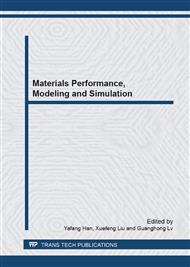p.491
p.498
p.504
p.510
p.518
p.528
p.535
p.540
p.545
Prediction and Simulation of Microstructure-Property and Residual Stress for Large Size Hot Rolled H-Beam
Abstract:
Based on the full process 3D elastic-plastic thermal mechanical coupled simulation of large size H-Beam, the relevant issues about the residual stress distribution of H-Beam has been systematically analyzed, which include the formation and control of residual stress. In addition, based on the conclusion of the large size H-Beam residual stress analysis, the method of cooling for the control of residual stress has been provided and experiments about the outside cooling of the flange has been implemented. The result of the experiments proved that the coercive water cooling for the outside surface of flange largely reduced the residual stress of the web, which can avoid the web wave after cooling and crack phenomenon during utility. At the same time, on the basis of the whole rolling process finite element simulations, with the help of model of austenite evolution, phase transition and microstructure and property prediction, the simulation of 3D microstructure evolution and property prediction has been fulfilled. By means of microstructure research, it has been proved that the simulation result meet the genuine microstructure very well, which has revealed the feasibility of this method.
Info:
Periodical:
Pages:
518-527
Citation:
Online since:
March 2013
Authors:
Price:
Сopyright:
© 2013 Trans Tech Publications Ltd. All Rights Reserved
Share:
Citation:


